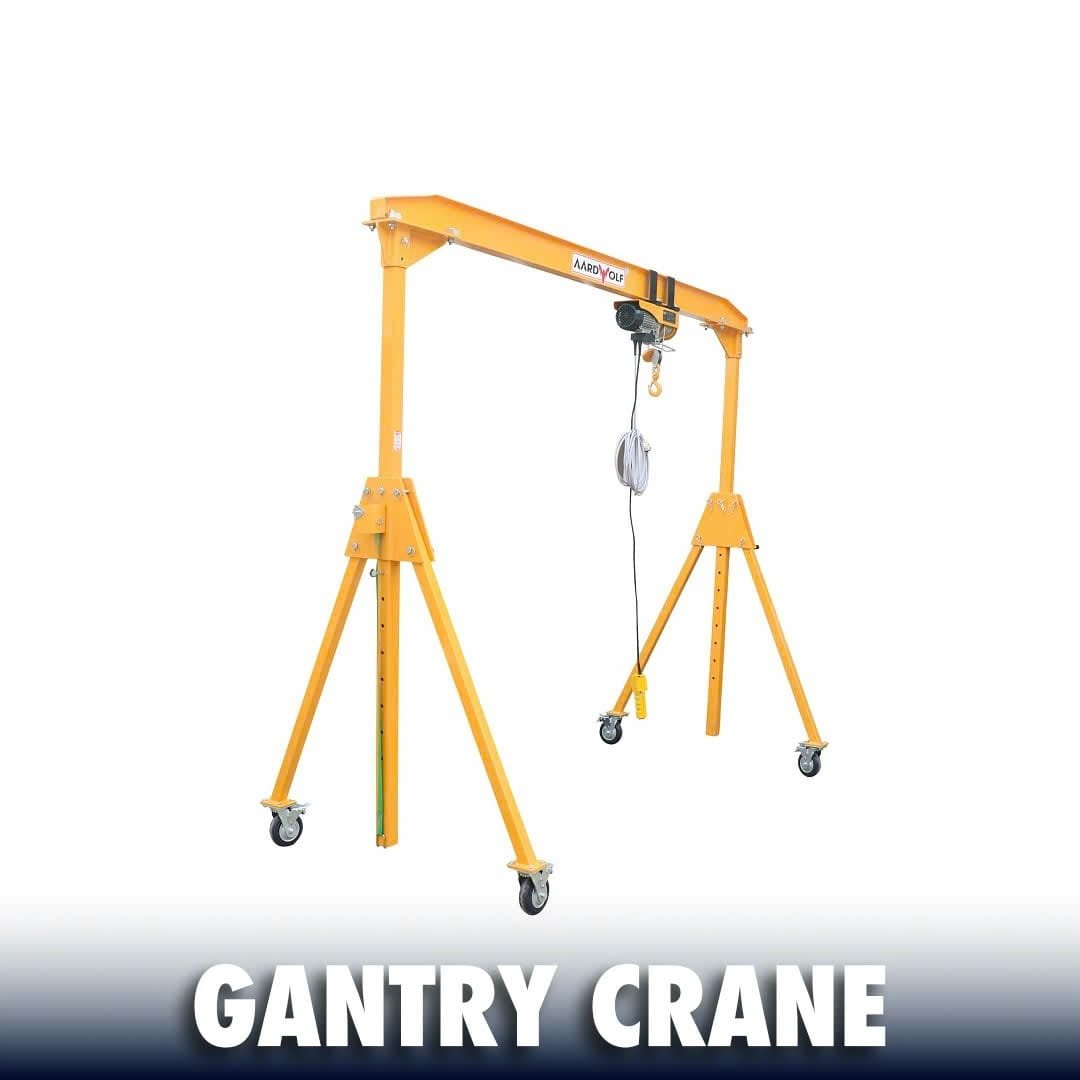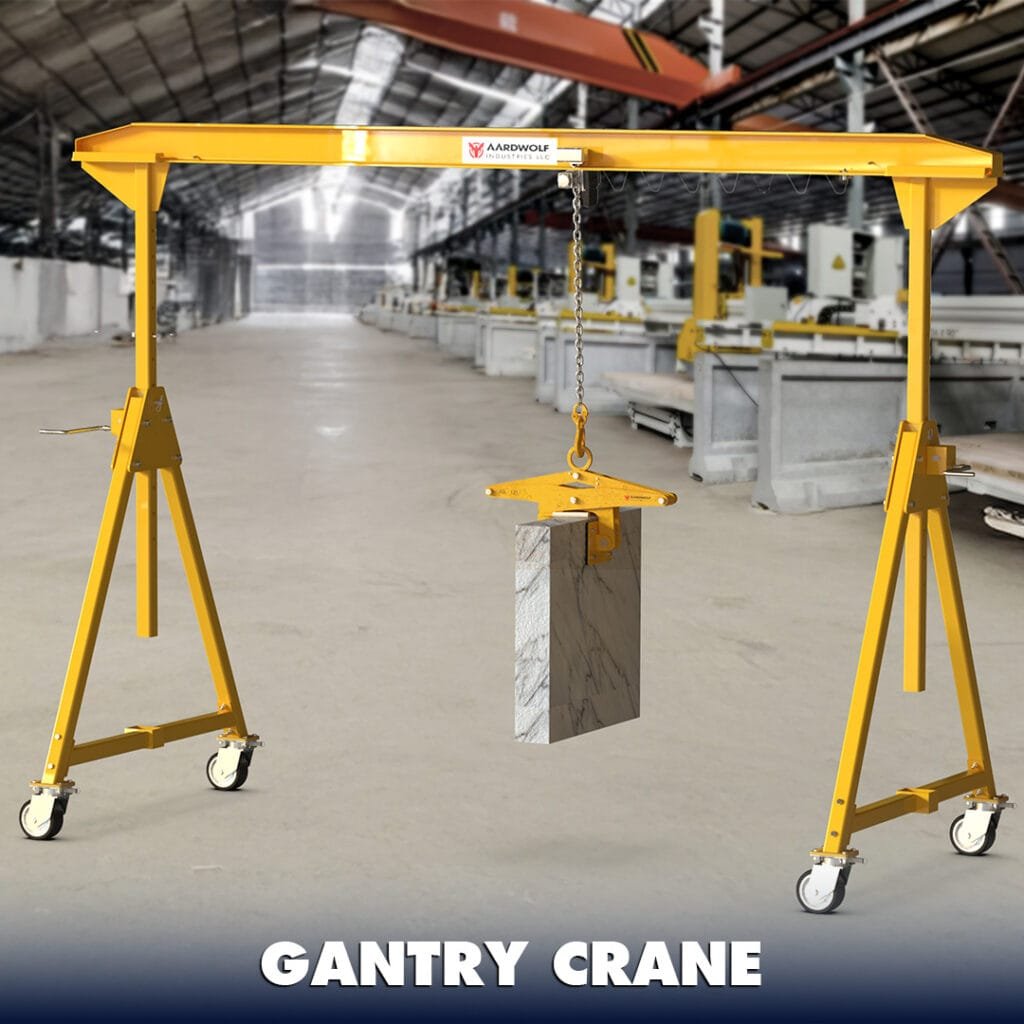
Gantry cranes are a unique and versatile category of lifting equipment that have become indispensable across various industries.
Gantry cranes are a unique and versatile category of lifting equipment that have become indispensable across various industries. Whether you need to move heavy loads in a manufacturing plant, streamline construction site operations, or handle bulky materials in shipping yards, gantry cranes provide the perfect blend of mobility, stability, and efficiency. In this comprehensive guide, we will explore what category a gantry crane falls into, the different types available—such as overhead gantry cranes, gantry crane portable systems, and gantry crane mobile solutions—and how these machines are revolutionizing material handling in industrial settings.

Introduction to Gantry Cranes
Gantry cranes are heavy-duty lifting machines built on a robust framework known as a gantry. Unlike other cranes that are permanently fixed or mounted to structures, gantry cranes are freestanding and can traverse a defined work area. This design allows them to move heavy loads across a job site without the constraints of a fixed overhead structure.
What Exactly is a Gantry Crane?
A gantry crane features a self-supporting gantry (or crane gantry) that supports the hoisting mechanism, typically a trolley equipped with a chain hoist or wire rope system. This unique design makes gantry cranes ideal for both permanent installations and temporary operations. They can be categorized into several types based on their mobility and installation methods, including:
- Overhead Gantry Crane: We can use it indoor industrial environments where precise and repetitive movements are required.
- Gantry Crane Portable: Designed for quick assembly and disassembly, these cranes are perfect for temporary projects and locations that require flexibility.
- Gantry Crane Mobile: Equipped with wheels or tracks, these cranes offer enhanced mobility for dynamic work environments.
For example, a gantry crane offers a reliable solution that caters to diverse operational needs, combining robustness with easy reconfiguration.
Categories and Classification of Gantry Cranes
Defining the Category
Gantry cranes are broadly classified as material handling equipment. This category encompasses any machinery that is used to transport, move, or position materials in an industrial environment. What sets gantry cranes apart from other material handling systems is their freestanding gantry structure, which provides the following benefits:
- Flexibility: The ability to operate without permanent overhead fixtures allows gantry cranes to be repositioned as needed.
- Mobility: Mobile and portable versions can be easily moved across a job site.
- Versatility: Adapted to a wide range of lifting tasks, from heavy industrial loads to delicate, precise placements in manufacturing processes.
How Gantry Cranes Differ from Other Cranes
The term “crane” covers a broad range of lifting equipment, but gantry cranes have several distinct characteristics:
- Self-Supporting Structure: Unlike overhead cranes that rely on fixed beams or ceilings, gantry cranes stand on their own supports.
- Mobility Options: With options like gantry crane mobile and portable gantry crane systems, they can be quickly moved or reconfigured, which is not possible with many traditional cranes.
- Wide Application Range: From heavy-duty industrial applications to smaller, precision tasks, gantry cranes cover a vast spectrum of lifting requirements.
Types of Gantry Cranes
Understanding the various types of gantry cranes is key to determining which category best fits your operational needs. Let’s take a closer look at the different types:
Overhead Gantry Crane
Overhead gantry cranes are typically installed in fixed industrial environments such as warehouses, factories, and production lines. They operate on a set of fixed rails and provide excellent precision and repeatability for tasks that require consistent movements. Key features include:
- High Precision: Ideal for tasks that demand meticulous positioning of heavy loads.
- Stable Operations: Their fixed nature ensures minimal vibration and high load stability.
- Indoor Use: Best suited for indoor applications where the environment is controlled.
Gantry Crane Portable
We designed Gantry crane portable systems with flexibility in mind with lightweight materials like aluminum, which allow for quick assembly, disassembly, and relocation. These cranes are perfect for temporary projects, outdoor events, and construction sites where operations may change frequently. Their benefits include:
- Rapid Deployment: Easy to set up and take down without the need for permanent installation.
- Cost-Effectiveness: Lower installation costs make them ideal for short-term projects.
- Adaptability: Can be relocated or reconfigured to meet evolving operational demands.
If you’re looking for a versatile solution, consider a portable gantry crane that offers the same robust performance as its permanent counterparts.
Gantry Crane Mobile
Gantry crane mobile systems take portability to the next level. Mounted on wheels or tracks, these cranes can easily navigate across large job sites or industrial facilities. They are particularly useful in environments where loads need to be moved over long distances or where the layout of the facility changes frequently. Key advantages include:
- Enhanced Mobility: Can travel across varied terrain, making them suitable for dynamic work environments.
- Efficiency: Quickly repositioned to different areas of the job site, reducing downtime.
- Flexibility: Ideal for operations such as shipping yards, construction sites, and expansive industrial plants.
Crane Gantry: The Backbone of Gantry Cranes
At the heart of every gantry crane is the crane gantry—the sturdy framework that supports the lifting mechanism. The quality of this gantry determines the overall performance and durability of the crane. Whether you require a stationary overhead gantry crane or a mobile solution, the structural integrity of the gantry is paramount for safe operations.
Advantages and Applications of Gantry Cranes
Gantry cranes offer numerous benefits that make them a popular choice in various industries. Here are some of the key advantages and applications:
Enhanced Operational Efficiency
Choosing gantry cranes to maximize efficiency by streamlining the movement of heavy materials. Their design minimizes the need for multiple lifting operations and reduces the time required to reposition loads. This efficiency is especially beneficial in high-volume industrial settings.
Flexibility and Adaptability
One of the most significant advantages of gantry cranes is their flexibility. There are various options ranging from overhead gantry cranes to gantry crane mobile and gantry crane portable systems, these customized machines to suit specific operational requirements. This adaptability is critical in environments where workflows frequently change.
Improved Safety and Stability
Safety is a top priority in any industrial operation. We should choose the modern gantry cranes with advanced safety features such as load sensors, emergency stop buttons, and remote control systems. These features ensure that heavy loads are moved safely and securely, minimizing the risk of accidents. The inherent stability provided by the robust crane gantry design further enhances operational safety.
Cost-Effective Material Handling
Investing in gantry cranes can lead to significant long-term savings. Their versatility means that one system can serve multiple purposes, reducing the need for specialized equipment. Additionally, the ease of setup and relocation—especially in the case of portable gantry cranes—can lower installation and operational costs.
Industrial Applications
Gantry cranes find applications across a broad range of industries:
Manufacturing and Warehousing
In manufacturing plants and warehouses, overhead gantry cranes are commonly used for moving heavy components, assembling large structures, and organizing storage systems. Their precision and stability make them ideal for repetitive, high-accuracy tasks.
Construction
Construction sites benefit immensely from gantry crane portable and gantry crane mobile systems. These cranes are used to lift and transport building materials such as steel beams, concrete panels, and prefabricated components. Their ability to be quickly set up and relocated makes them invaluable for temporary construction projects.
Shipping and Logistics
Ports and shipping yards rely on mobile gantry cranes to efficiently load and unload containers. The robust design of these cranes enables them to handle continuous, heavy-duty operations even in challenging outdoor environments.
Energy and Infrastructure
In the energy sector, gantry cranes are essential for installing and maintaining large equipment like turbines, generators, and transformers. Their precision and reliability ensure that critical components are handled safely, whether in a fixed installation or on a mobile platform.
Safety and Maintenance of Gantry Cranes
Proper safety protocols and regular maintenance are critical for the optimal performance of gantry cranes. Here are some best practices:
Regular Inspections
Routine inspections of the gantry structure, hoisting mechanisms, and mobility components are essential. Regular maintenance checks help identify potential issues early, preventing costly breakdowns and ensuring safe operation.
Operator Training
Comprehensive training for operators is vital. Operators should be familiar with the control systems, safety features, and operational procedures specific to the type of gantry crane they are using. Proper training minimizes the risk of accidents and maximizes efficiency.
Scheduled Maintenance
Establishing a scheduled maintenance plan is crucial for the longevity of gantry cranes. Regular lubrication, component replacements, and system calibrations help maintain peak performance. Whether operating an overhead gantry crane or a gantry crane mobile system, proactive maintenance is key to reducing downtime and enhancing safety.
How to Choose the Right Gantry Crane for Your Operations
Selecting the right gantry crane depends on several factors, including the nature of your operation, load capacity requirements, mobility needs, and budget constraints. Here are some steps to guide your decision-making process:
Assess Your Operational Needs
- Load Requirements: Determine the maximum weight your operation requires the crane to handle. Choose a system that exceeds your needs to ensure safety and longevity.
- Work Area: Consider the size and layout of your worksite. For larger, more dynamic areas, a mobile or portable gantry crane might be the best fit.
- Frequency of Use: Evaluate whether your operation requires a permanent installation, such as an overhead gantry crane, or if a temporary, flexible system like a portable gantry crane would be more appropriate.
Evaluate Mobility and Flexibility
- Fixed vs. Mobile: If precision and stability are paramount in a fixed environment, an overhead gantry crane may be ideal. However, if your worksite layout changes frequently, consider a gantry crane mobile or portable gantry crane system.
- Relocation Needs: For operations that require rapid repositioning, the ease of assembly and disassembly of a portable gantry crane is a significant advantage.
Consider Safety and Long-Term Costs
- Safety Features: we should choose the cranes with modern safety features such as load sensors, emergency stops, and remote controls.
- Maintenance Costs: Factor in long-term maintenance and repair costs. A system with lower maintenance requirements can save money over its lifetime.
- Budget Constraints: While upfront costs are important, consider the total cost of ownership, including installation, operation, and maintenance expenses.
Future Trends in Gantry Cranes
As industries evolve, so does the technology behind gantry cranes. Here are some emerging trends:
Automation and Smart Control
The integration of automation in gantry cranes is transforming to handle the performances. Plus, the automated systems reduce human error and enhance operational efficiency, whether in fixed overhead installations or mobile configurations.
IoT and Data Analytics
The use of Internet of Things (IoT) technologies in gantry cranes allows for real-time monitoring of performance, load distribution, and system health. This data-driven approach supports predictive maintenance and operational optimization, ensuring that your equipment remains in top condition.
Eco-Friendly Innovations
Sustainability is becoming increasingly important in industrial operations. Manufacturers are focusing on designing energy-efficient gantry cranes that use lighter materials and advanced power systems to reduce their carbon footprint while maintaining high performance.
Modular and Customizable Systems
Modularity is key to adapting to rapidly changing industrial needs. Future gantry crane systems will likely offer greater customization options, allowing businesses to tailor their material handling solutions to specific operational requirements. This adaptability ensures that whether you need a fixed, mobile, or portable system, your gantry crane can evolve alongside your business.
Conclusion
In conclusion, gantry cranes represent a distinct category within the broader world of lifting equipment. Their unique, freestanding gantry structure sets them apart from other types of cranes, offering unmatched flexibility, mobility, and efficiency. Whether you are considering an overhead gantry crane for a fixed industrial environment, a gantry crane portable system for temporary projects, or a gantry crane mobile solution for dynamic work sites, understanding the category and capabilities of these machines is essential for making an informed decision.
Gantry cranes offer numerous advantages—from enhanced operational efficiency and improved safety to cost-effectiveness and versatility—making them an ideal investment for a wide range of industries. Their robust design and innovative features ensure that they can handle heavy loads reliably while adapting to ever-changing operational requirements.
By assessing your specific needs, including load capacity, work area, and mobility requirements, you can choose the right gantry crane that not only meets your current demands but also positions your business for future growth. As technology continues to advance, the evolution of gantry cranes—through automation, IoT integration, eco-friendly designs, and modular configurations—will further enhance their role in modern material handling.
Embrace the transformative power of gantry cranes to streamline your operations and boost productivity. Explore solutions like the gantry crane for reliable performance, and consider a portable gantry crane for unparalleled flexibility and ease of use.

